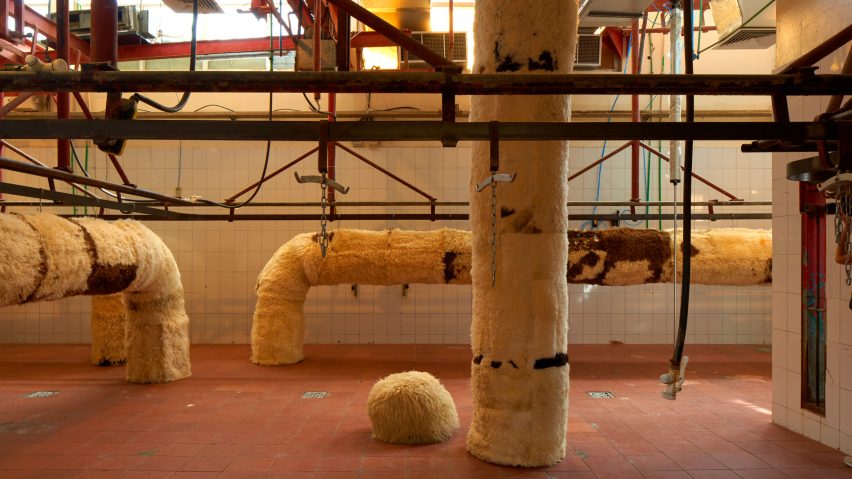
Cave Bureau creates Anthropocene Museum in Sharjah slaughterhouse
Kenyan architectural studio Cave Bureau has transformed the Old Sharjah Slaughterhouse into the Anthropocene Museum 9.0 as part of the Sharjah Architecture Triennial.
Cave Bureau chose a still-functioning slaughterhouse in central Sharjah as the home of the ninth edition of its roaming Anthropocene Museum.
"We have welcomed artists and creatives to be in the museum, so you walk through a working slaughterhouse, but also a museum," Cave Bureau co-founder Kabage Karanja told Dezeen.
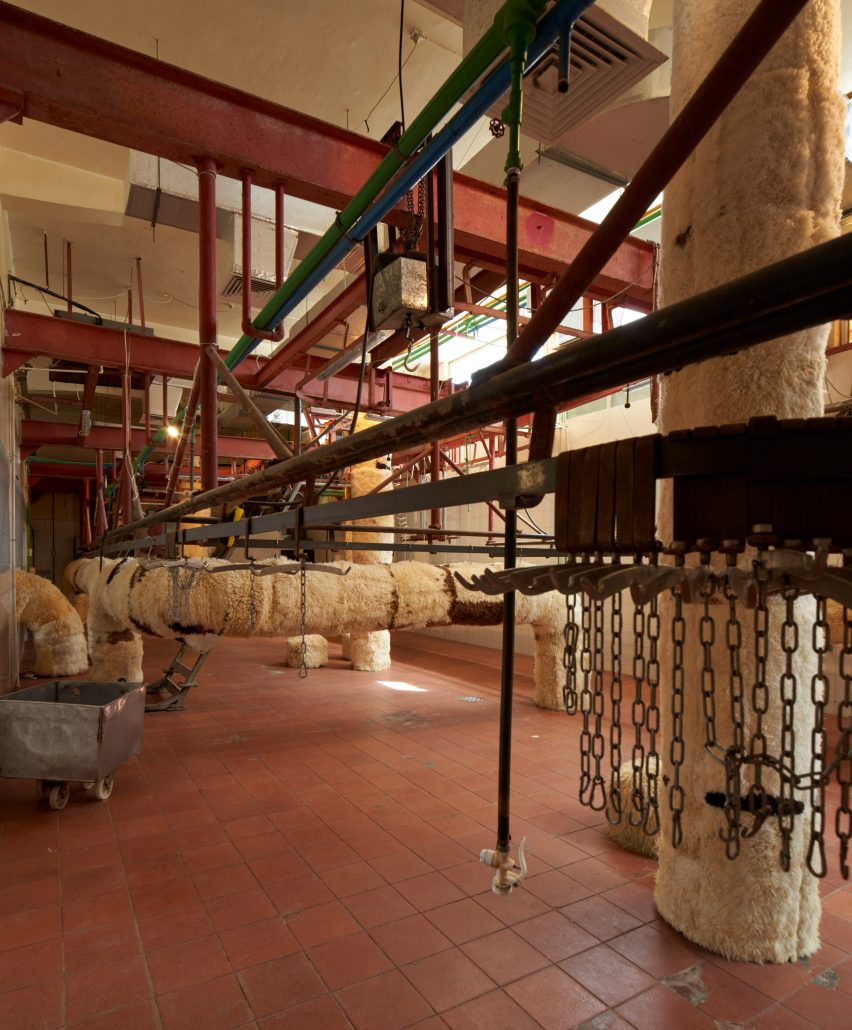
"We were invited to select a site in any part of the city of Sharjah and make an intervention," explained Karanja.
"We chose the Old Sharjah Slaughterhouse, as an extension of the Sharjah Architecture Triennial's strategy to embed an exhibition program within the fabric of the city," he continued.
"A powerful ambition that we refer to as an act of reverse futurism, where they co-opt both old and new neglected buildings of the city as a cultural canvas to trigger new regenerative interventions that can spur the city's growth, through a rich exchange of ideas and urban experiments."
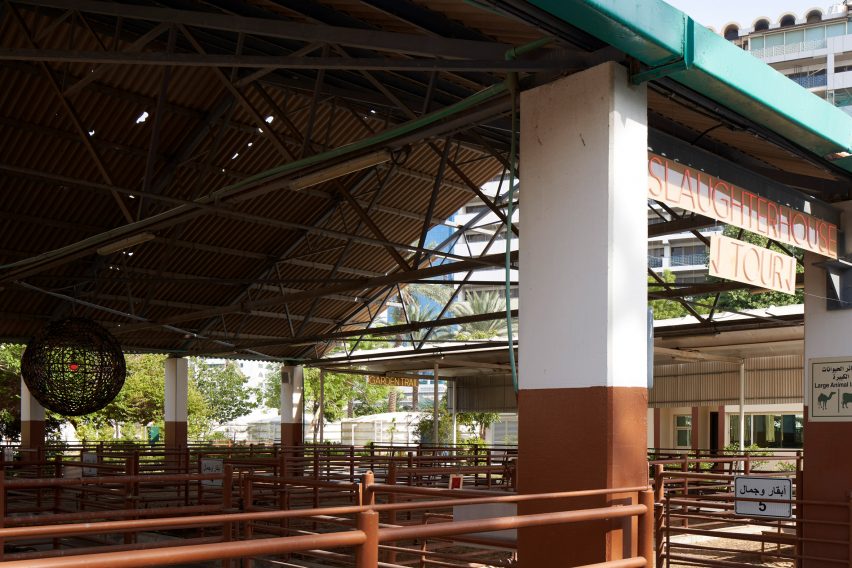
Visitors travel through the museum following the route that animals take when being processed through the slaughterhouse.
First, they enter through the gates, where a neon sign saying "slaughterhouse tour" was erected, before entering the pens and then travelling up a ramp into the slaughterhouse and processing rooms.
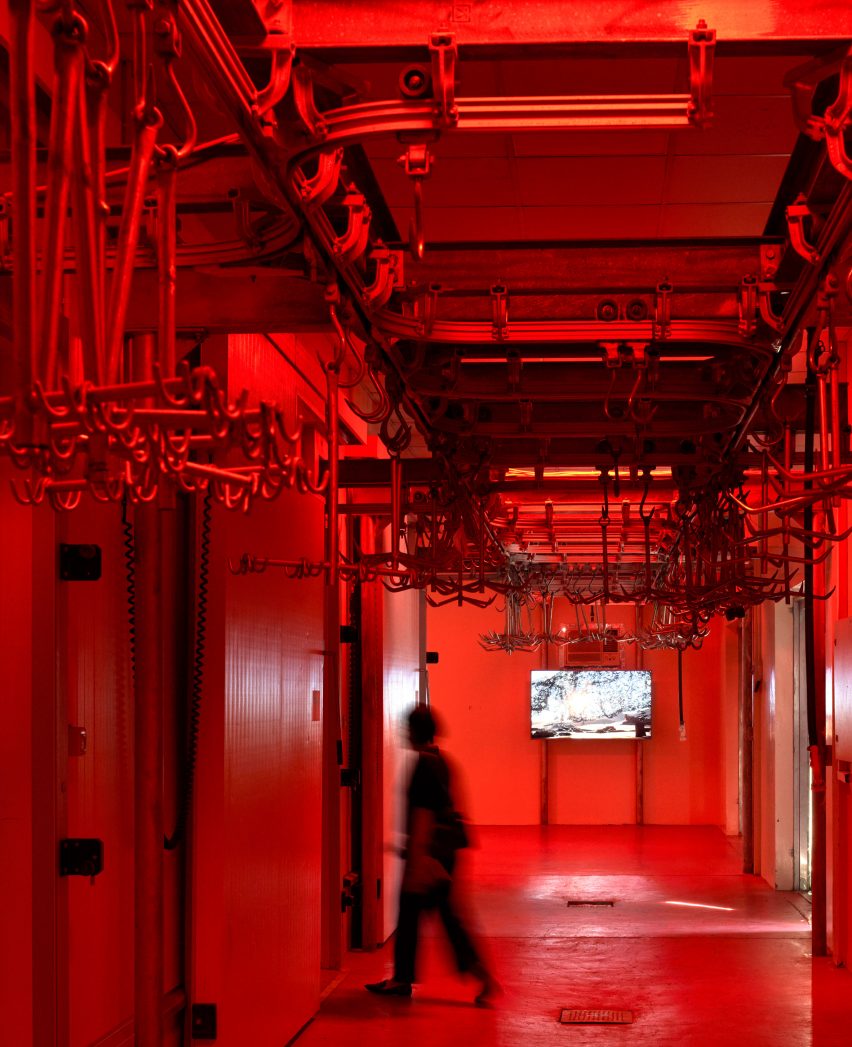
"The concept of our installation was the adaptation and tour of Sharjah's old slaughterhouse, whose primary protagonists are the animals — cows, goats, sheep, and camels — consumed in the city; often without thought of their origins or how they are processed," explained Karanja.
"The audience is corralled through an ever-present, but seldom reflected upon municipal event space, in a building that is now only intermittently used."
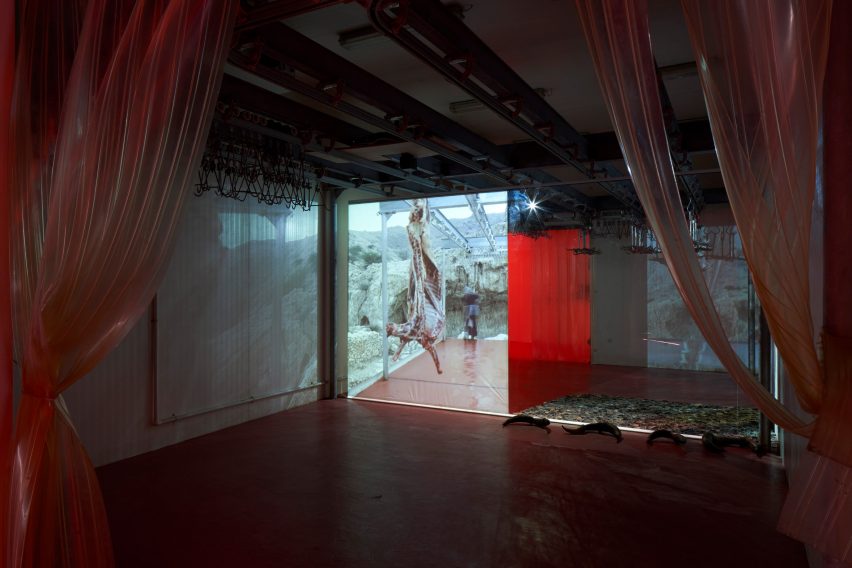
Cave Bureau's Anthropocene Museum creates installations and exhibits examining issues surrounding decolonialisation and decarbonisation that are focused on "generating architectural modes of healing".
The studio recently created an Anthropocene Museum exhibition for the Louisiana Museum of Modern Art in Denmark.
The latest edition of the museum aims to draw attention to the environmental impact of meat rearing and the process of commodification and commercialisation.
"The significance of the slaughterhouse is that it sits outside the public's consciousness and yet looking back at our early homosapien heritage, this was always intertwined," said Karanja.
"On a global scale, man-induced livestock proliferation has constituted the greatest biomass of mammalian life on earth, with animals a commodity that is bought and sold to the highest bidder," he continued.
"In equal and potent measure, human beings have been commodified through capitalism, bought and sold to the highest consumerist bidder. A reference to a recent, near-forgotten past also emerges – enslaved Africans were led from the Indian Ocean shores by Arab merchants to the Middle East, and indeed the Emirates, like livestock."
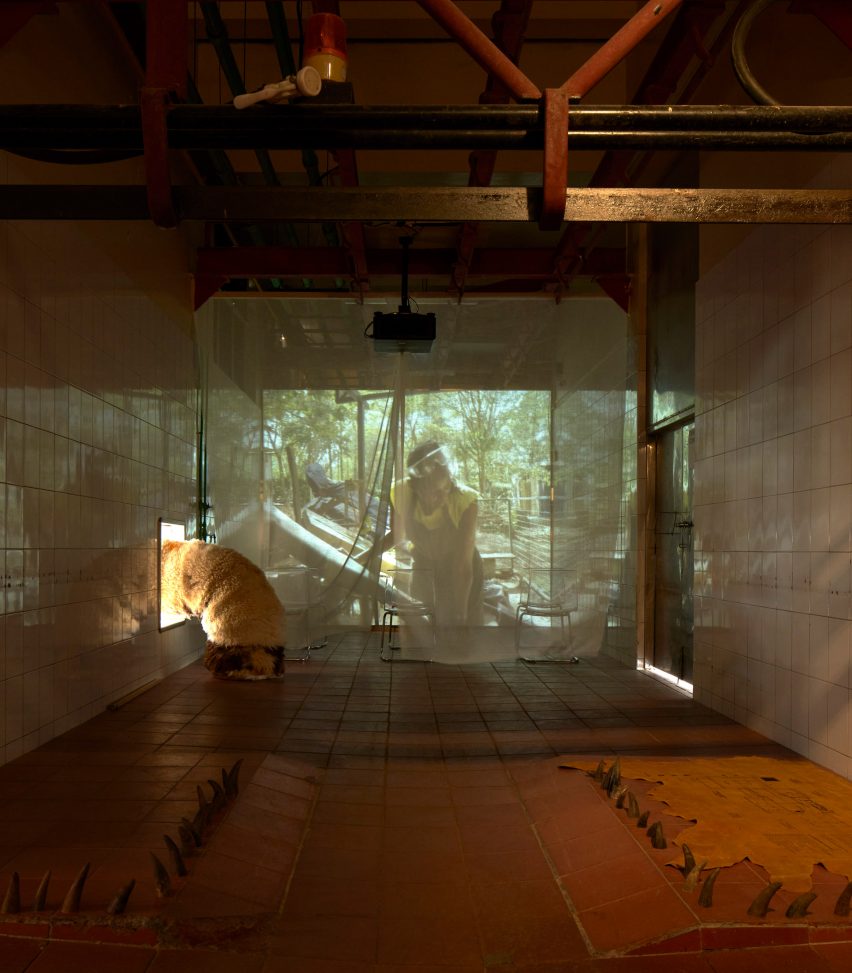
Within the slaughterhouse, Cave Bureau curated a series of artists within the different spaces usually used for processing the meat.
The co-curated space contained painting, photography, sculpture, installation, sound and virtual reality by artists including Joseph Kamaru KMRU, Densu Moseti, James Muriuki, Beatrice Wanjiku, Jay Patel, and Ogeto Nyamwaya.
The space also included a work called Utility of Being by Adrian Pepe that was commissioned directly by the Sharjah Architecture Triennial.
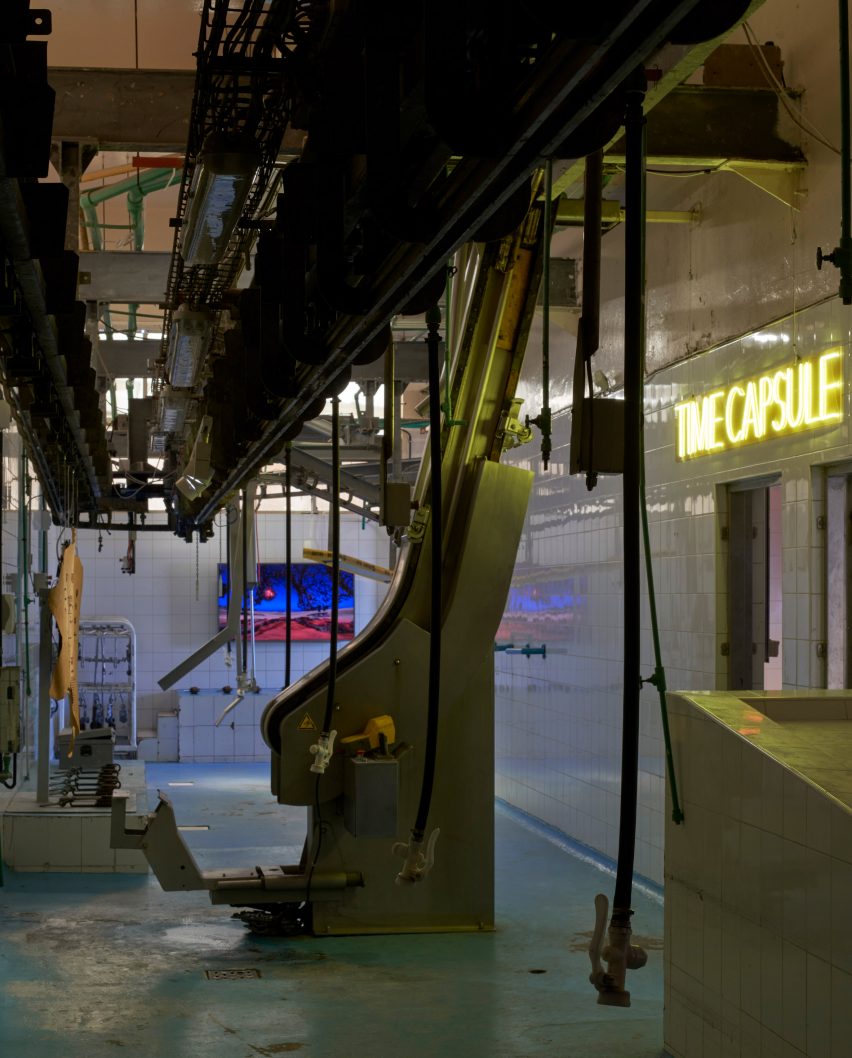
"For the first time we had the opportunity to expand the bounds of museology, by producing a co-curated program, with multiple artist works within a raw municipal and yet culturally active space that would not normally be perceived as a museum," explained Karanja.
"The words of prolific thinkers were laser printed on cowhide leather, such as Edouard Glissant where in the book Archipelago he says, 'In the end, the idea is to bring the world into contact with the world, to bring some of the world's places into contact with others… the works of art must create the museum rather than the museum creating the works of art'."
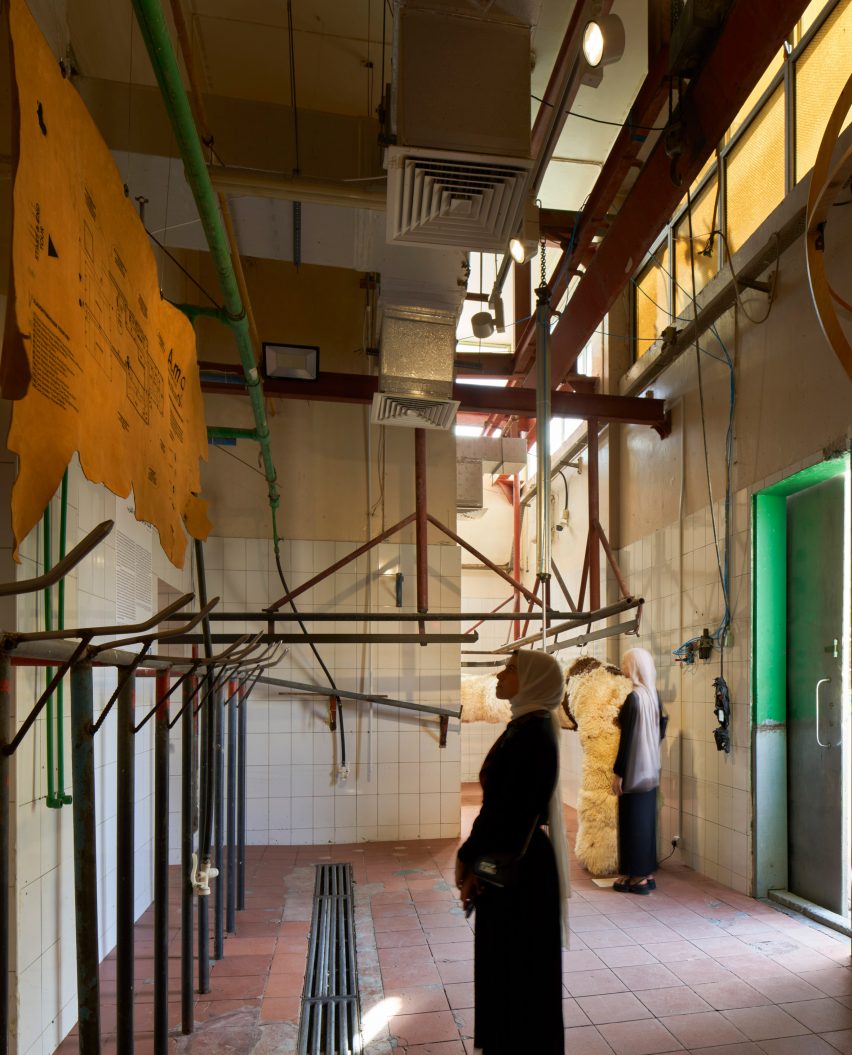
Karanja hopes that this version of the museum will encourage people to reconsider the shifting nature of cities.
"We hope visitors will view the ever-shifting built landscape of cities and by extension life, as an opportunity for reversed notions of growth, through introspection, and spiritual reconnection," he said.
"By taking visitors into a different and often uncomfortable space such as this, can trigger a broader planetary consciousness, that attempts to apprehend our state of existence in the world today without us building almost anything at all to express that."
This is the second edition of the Sharjah Architecture Triennial. It was curated by Nigerian architect Tosin Oshinowo who explained the theme of scarcity in a recent interview with Dezeen. We rounded up 12 intriguing pavilions and installations from the event.
The photography is by Edmund Sumner.
Sharjah Architecture Triennial 2023 takes place from 11 November 2023 to 10 March 2024 at various locations across Sharjah. See Dezeen Events Guide for an up-to-date list of architecture and design events taking place around the world.